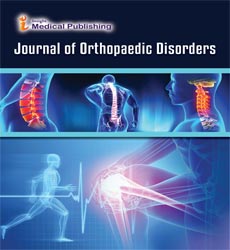Audit project: Assessment of Adherence to BOAST 4 Guidelines for the Management of Open Fractures in poole general hospital
Abstract
Introduction:
Patients who present with open fracture needs urgent medical attention. We tried to educate ourselves and our department about the guidelines of treating open fractures, to make sure practice is in adherence with best medical practice recommendations. Managing open fractures expeditiously will lead optimum recovery and will minimise the risk of infection.
Over a period of 6 months all open fractures cases that were admitted and managed in Poole hospital.
1st cycle covered period from 1/6/2016 to 31/12/2016
2nd cycle covered period form 1/6/2018 to 1/12/2018
Standard used: Boast -4 guidelines, and NEW BOAST Guidelines for open fractures (December, 2017)
Criteria assessed:
1.Date of fracture fixation
2.Date of definitive skin closure.
3.Whether medical photography was done on admission.
4.Whether antibiotics were given as per BOAST-4 or Poole hospital policy including the duration of antibiotics
Results:
18/40 (45%) patient had antibiotics which were not according to BOAST-4 or Poole hospital guidelines, which improved in the second cycle to 6/40 (15%). Success rate increased from 55 % to 85 %
30/40 (75%) patients were given antibiotics for more than recommended duration, which also improved in the 2nd cycle to 19/40 (47.5%)
Only 9/40 (22.5%) patients had medical photography on admission. Unfortunately, that didn`t improve in the second cycle with only 7/40 patient who had photos on the system
38/38 patients (100%) had definitive skeletal stabilization within 72 hours and wound closure within 7 days. 1/40 patient self-discharged without waiting for wound closure and 1/40 patient was transferred to Salisbury Hospital for definitive skin closure. The department maintained the same level of proficiency in the 2nd cycle with a 1005 success rate as well. In the second cycle All the 36/36 patients (100%) had definitive skeletal stabilization within 72 hours and wound closure within 7 days. 1/40 patient self-discharged without waiting for wound closure and 3/40 patient was transferred to Salisbury Hospital for definitive skin closure.Results
Open Access Journals
- Aquaculture & Veterinary Science
- Chemistry & Chemical Sciences
- Clinical Sciences
- Engineering
- General Science
- Genetics & Molecular Biology
- Health Care & Nursing
- Immunology & Microbiology
- Materials Science
- Mathematics & Physics
- Medical Sciences
- Neurology & Psychiatry
- Oncology & Cancer Science
- Pharmaceutical Sciences
